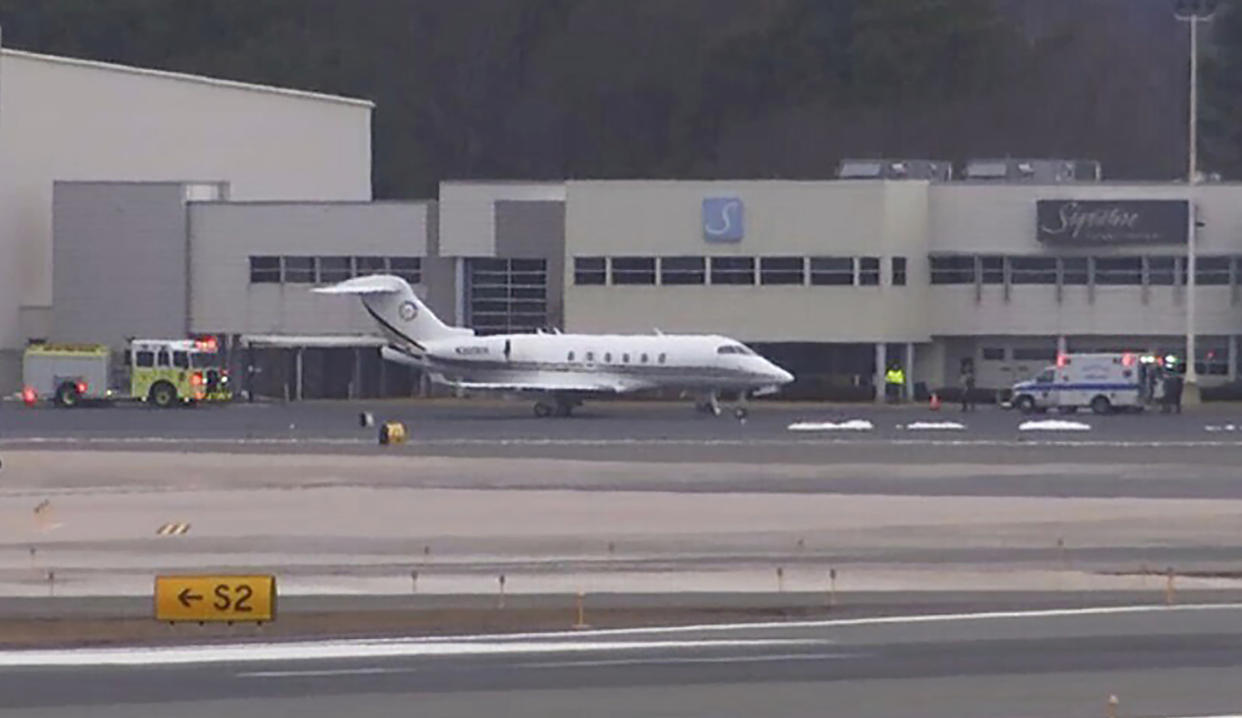Report: No turbulence during fatal business jet flight
HARTFORD, Conn. (AP) — Investigators said Friday that a passenger on a business jet was fatally injured in early March when the aircraft violently bucked up and down after pilots disconnected a system used to stabilize the plane.
The National Transportation Safety Board said the pilots were responding to several warnings in the cockpit of the Bombardier jet that diverted to a Connecticut airport on March 3. They followed a checklist and turned off a switch that “trims” or adjusts the stabilizer, a control panel on the plane’s tail.
The plane turned nose-up at several times the force of gravity, then pointed lower before again turning upward before pilots could regain control, the report said.
Pilots told investigators they did not encounter turbulence, as the NTSB had said in a preliminary assessment the day after the crash.
The trim system of the Bombardier Challenger 300 twin-engine jet was the subject of a Federal Aviation Administration last year mandate that pilots conduct extra safety checks before flights.
Representatives for Bombardier did not immediately respond to messages seeking comment Friday.
The two pilots and three passengers were traveling from Keene, New Hampshire, to Leesburg, Virginia, before diverting to Bradley International Airport in Connecticut. The passenger who died, Dana Hyde, 55, of Cabin John, Maryland, was brought to a hospital where she died from blunt-force injuries.
Hyde served in government positions during the Clinton and Obama administrations and was counsel for the 9/11 Commission, formally known as the National Commission on Terrorist Attacks Upon the United States.
It was unclear if Hyde was belted in her seat or up and about, in the cabin, of the jet owned by Conexon, based in Kansas City, Missouri. Her husband and his son, along with the pilot and co-pilot, were not injured in the incident, the report said.
A message seeking comment was left for Conexon, a company specializing in rural internet.
The report indicated the pilots aborted their initial takeoff because no one removed a plastic cover from one of the pitot tubes that determine airspeed, and they took off with a rudder limiter fault alert on.
Another warning indicated autopilot stabilizer trim failure. The plane abruptly pitched upward as the pilots moved the stabilizer trim switch from primary to off while working through procedures on a checklist, the report said.
The plane violently oscillated up and down and the "stick pusher” activated, the report said, meaning the onboard computer thought the plane was in danger of an aerodynamic stall.
The flight crew was comprised of two experienced pilots with 5,000 and 8,000 hours of flying time, and held ratings needed to fly for an airline. But both were relatively new to this model aircraft, earning their ratings last October.
The FAA issued its directive about Bombardier Challenger 300 jets last year after multiple instances in which the horizontal stabilizer on the aircrafts caused the nose of the plane to turn down after the pilot tried to make the aircraft climb.
___
Sharp reported from Portland, Maine. AP Airlines Writer David Koenig in Dallas contributed to this report.


